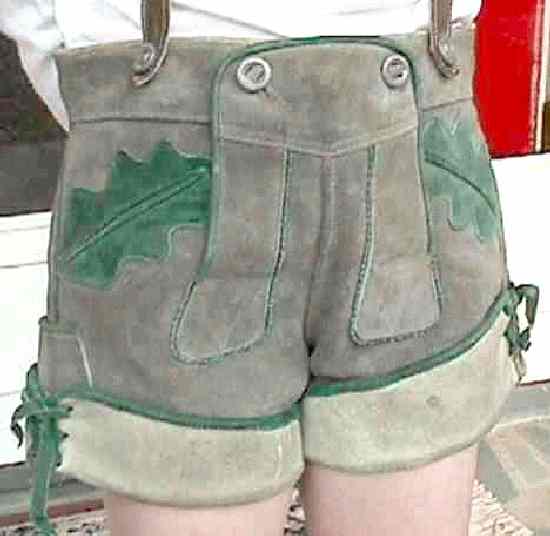
Figure 1.--This close-up of the front of a well-made pair of lederhosen show many features. Note the fall front, bone buttons, decorative oak trim pockets, and contrasting cuffs with leather ties.


Figure 1.--This close-up of the front of a well-made pair of lederhosen show many features. Note the fall front, bone buttons, decorative oak trim pockets, and contrasting cuffs with leather ties. |
Lederhosen have a variety of front design construction. The most common design is the fall front with either button or twin zip closures. The great bulk of lederhosen are made with this arrangement, especually the button fall front. This is the classic lederhosen design. Some lederhosen come with flys, but this is not common, although it is more common on knicker-length lederhosen. Some lederhosen, particularly those for young children have no fall front at all, they have a side zip for fastening and two applied pockets, often heart shaped.
A very caracteristic element of the casual lederhose is the flap in front. There are two kinds of fastening for the flap: 1) two buttons and 2) a doublet zip fastener. The most common type is the button type. Zippers did not appear in Germany until after World War II (1939-45) and thus are of fairly recent origin. Even in the post-war period, however, the button flap has continued to be the most common. The button flaps can be plain or decorated. The zipper flaps are usually undecorated.
The zip and button fall fronts are the most traditional and common forms of construction. There arem however, some other variations. Some lederhosen are made with a button or zip fly. The fly appears to be more popular on the knicker-length lederhosen than the shorts lederhosen. They are, however, also made for the shorts lederhosen although not very common. A HBC constributor reports shorts lederhosen in Austrai with a button fly and halter. He believes, however, that the appearance of this arrangement is not as neat looking as a buttoned or zipped fall front. A variety of different patterns are used.
Some lederhosen, particularly those for young children have no fall front at all, they have a side zip for fastening and two applied pockets, often heart shaped. This was not a commom style, but it was worn.
Lederhosen are kept closed by a fastening under the flap. The closure might be buttons. Actually until after World War II, most boys and mens' pants had button flys. Well made suit pants continued to be made with buttons into the 1950s. While bittons were the most common, some lederhosen had press-stud as used with a zippered front instead of buttons. The number of buttons varied. Most lederhosen probably had two buttons. Cheaper pairs have just one and some better quality pairs have three.
Navigate the Boys' Historical Clothing Web Site casual pages:
[Return to the Main lederhosen shorts construction page]
[Return to the Main Lederhosen page]
[Camp shorts]
[Clam diggers]
[Cord shorts]
[Jeans]
[Jump suits]
[Koveralls]
[Pinafore]
[Shortalls]
[Smocks]
[Soccer shorts]
Navigate the Boys' Historical Clothing Web Site:
[Return to Main short pants page]
[Introduction]
[Activities]
[Bibliographies]
[Biographies]
[Chronology]
[Clothing styles]
[Contributions]
[Countries]
[Literary]
[Boys' Clothing Home]
